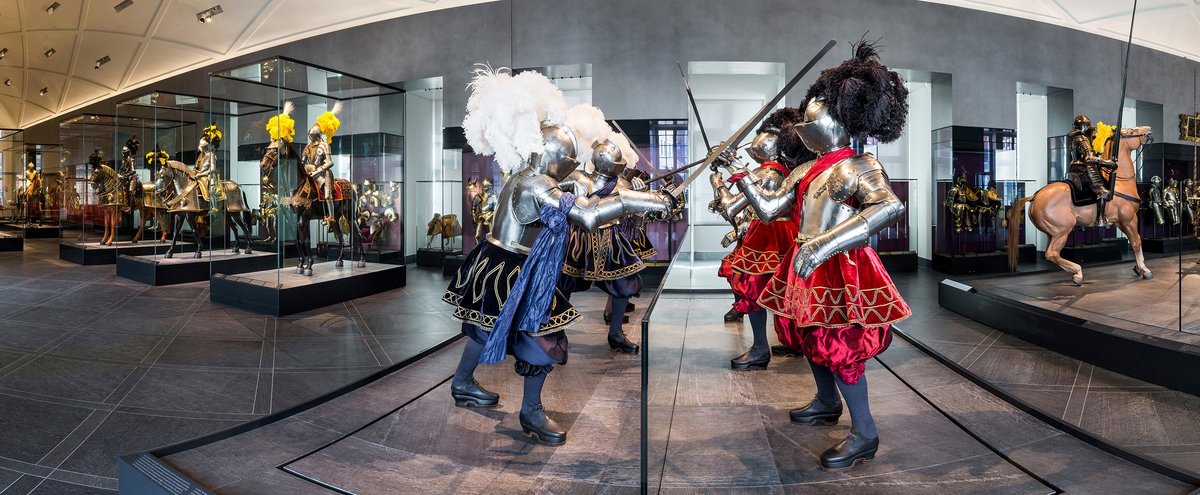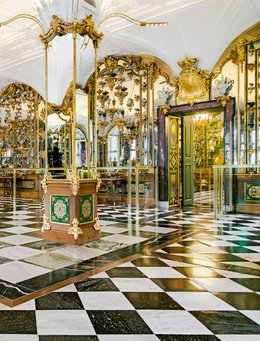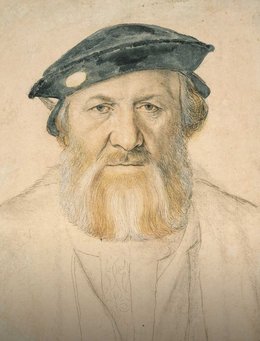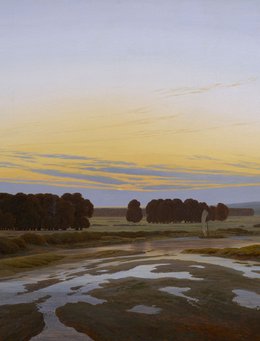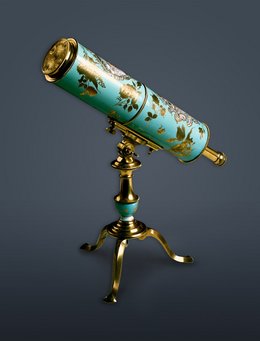280 years after it was lost, the Riesensaal reopened in 2013, resplendent in its original dimensions, yet with completely modern interior architecture. It now serves to present almost 350 objects from the fifteenth to the seventeenth centuries: suits of armour that covered the bodies of horses and riders, valuable lances, swords and other parade weaponry. Through the windows, visitors see the palace square, where men once fought wearing several kilograms of steel: The din must have been deafening.
Panoramic Tour
Der neue Riesensaal (The new Hall of the Giants)
The Riesensaal is true to its name in more than one way: Its designation originally derives from the painted depictions of giants on the walls, but the pillar-free space was also giant in itself, measuring 741 square metres, and was used for courtly celebrations, masquerade balls and weddings. However, when August the Strong died in 1733, the Dresden Residenzschloss (Royal Palace) lost this space because his son, August III (1696–1763) subdivided it into smaller rooms, including a chapel for his wife, Maria Josepha of Austria.
- Exhibition Site Residenzschloss
- Opening Hours daily 10—18, Tuesday closed 21/05/2024 10—18 (zusätzlich geöffnet)
- Admission Fees normal 14 €, reduced 10,50 €, under 17 free, Groups (10 persons and more) 12,50 €
Privacy notice
When you play our YouTube or Vimeo videos, information about your use of YouTube or Vimeo is transmitted to the US operator and may be stored. In addition, external media such as videos or fonts are loaded and stored in your browser.
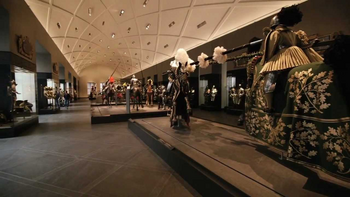
Originally practiced in preparation for battle, by the end of the fifteenth century tournaments began to play an important role in courtly ceremony and festivity. And the ruling houses fought with style: In their aesthetics, the objects on show in the Riesensaal hardly disclose the purpose they once served. In the place of computer-aided animation, reconstructed fighting scenes take visitors on a visual journey through time. Completing this picture are paintings commissioned by Christian I of Saxony (1560–1591) in honour of his father August, Elector of Saxony (1526–1586), which depict tournaments of that era.
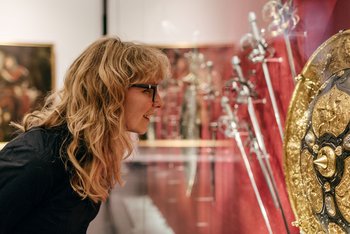
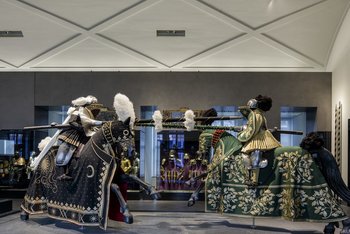
Anzogenrennen
Elector August of Saxony proved his courage and skill in a total of 55 jousting in his amount of tournaments between 1544 and 1566. The Court oft he Saxon Electors was one of the last to hold the German course (Rennen), in which the aim was to charge the opponent and unhorse him using a sturdy lance. This scene depicts the type of joust known as Anzogenrennen, so called because oft the targe bolted onto the left side oft he breastplate.
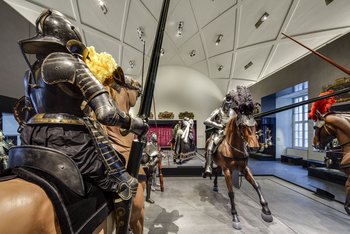
Pallienstechen
In the middle of the 16th cent. the German course (Rennen or running without the tilt) was replaced by the much less dangerous tilting (Welsches Gestech or Pallienstechen). In this type of tournament, which became increasingly popular in Germany owing to Italien influence, two combatants charged against each other, separated by a wooden barrier or tilt (Pallia). In this contest, the aim was to break the light lance on the opponent´s targe or helmet.
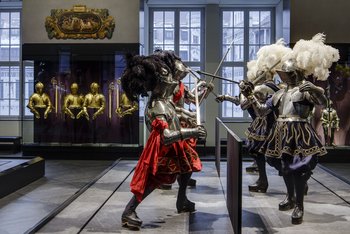
Fußturnier
In the 17th cent. the foot tourney had a late heyday in Dresden, mostly taking place in the palace courtyard or on the old market square (Altmarkt). A wide variety of festive events such as christenings, weddings, Shrove Tuesday (Fastnacht) or visits by princely guests provided welcome occasions fort the staging of such contests. Between 1606 and 1679 at least 11 foot tourneys were held in Dresden. The opponents stood facing each other, separated by a wooden barrier set at about waist-height.
